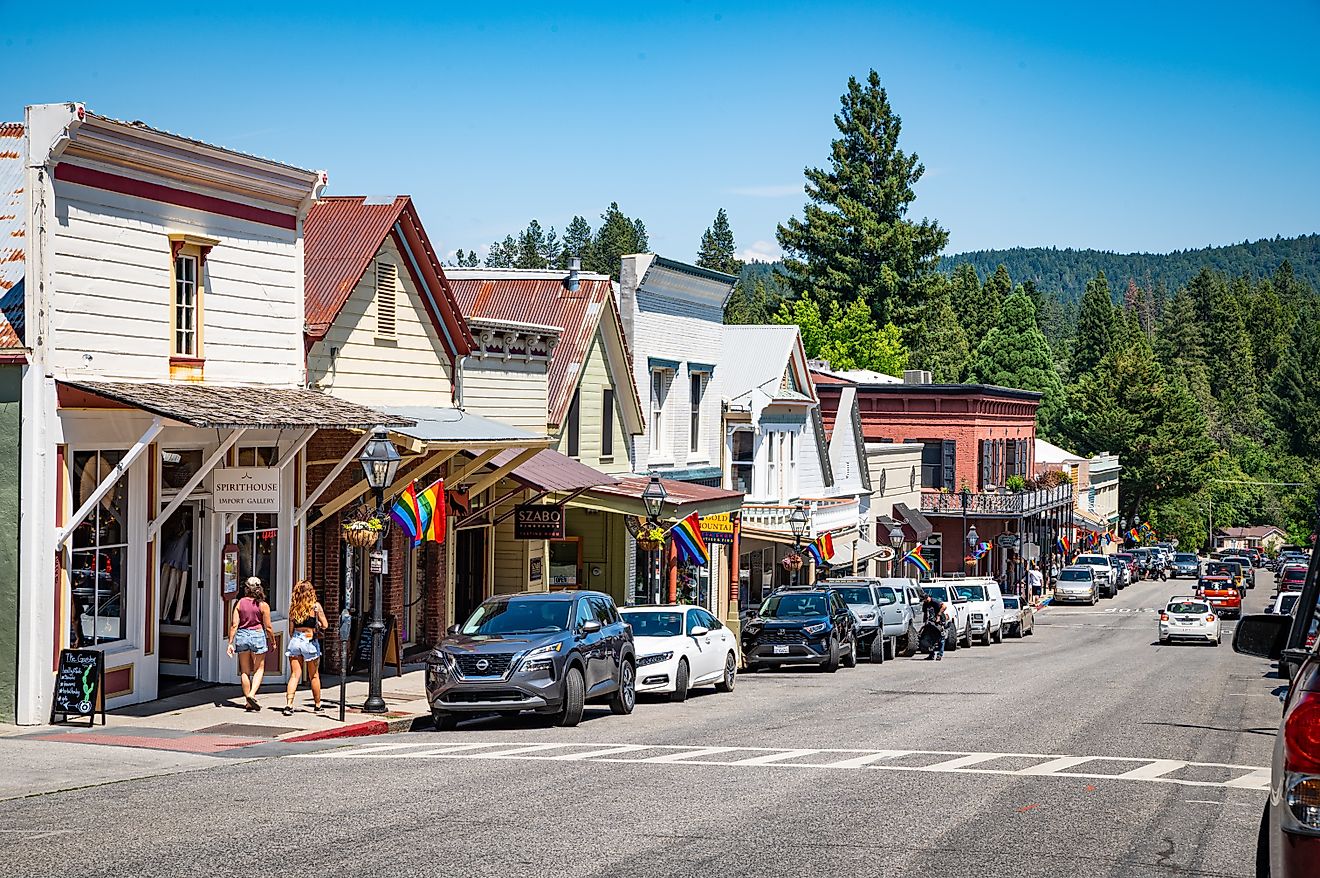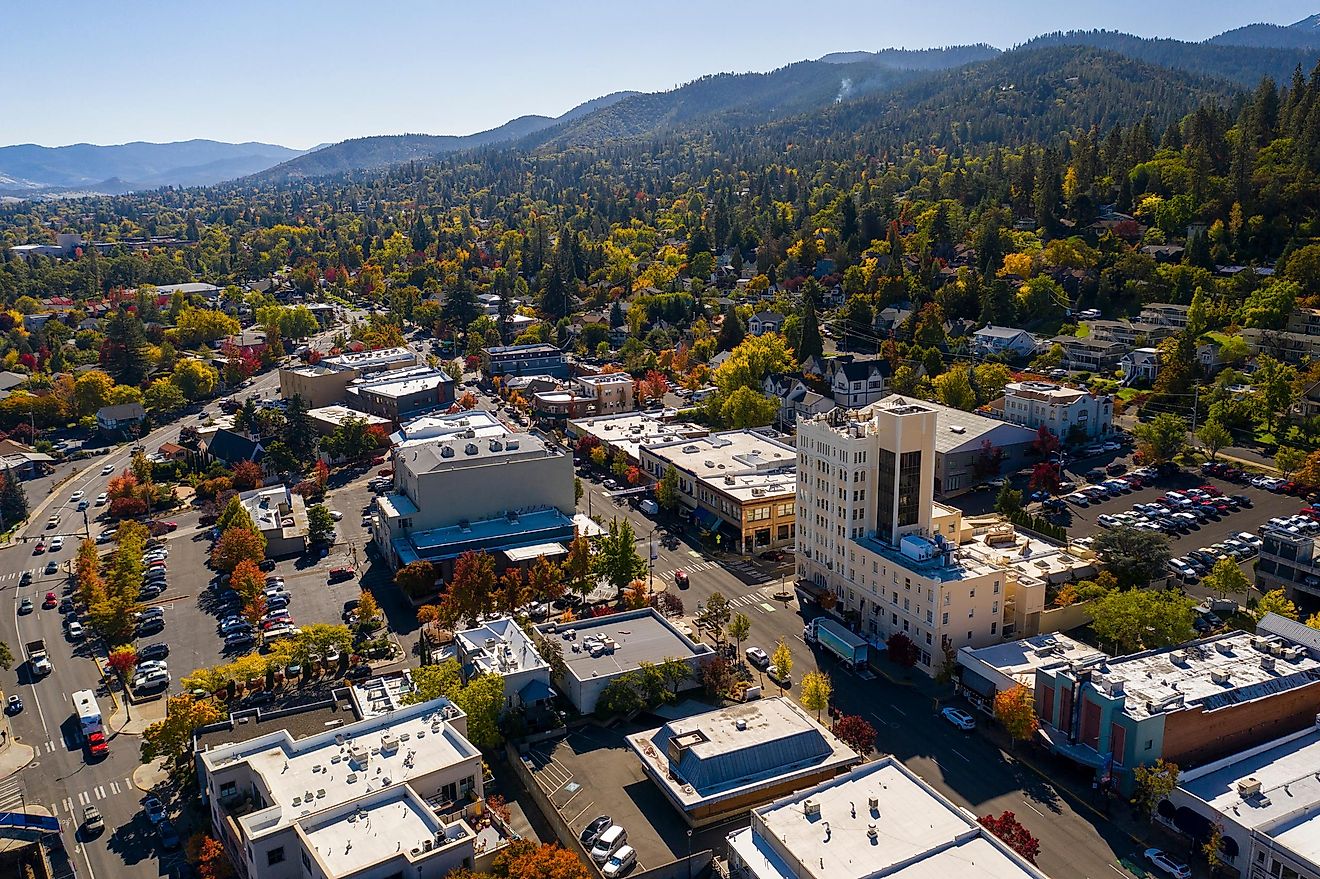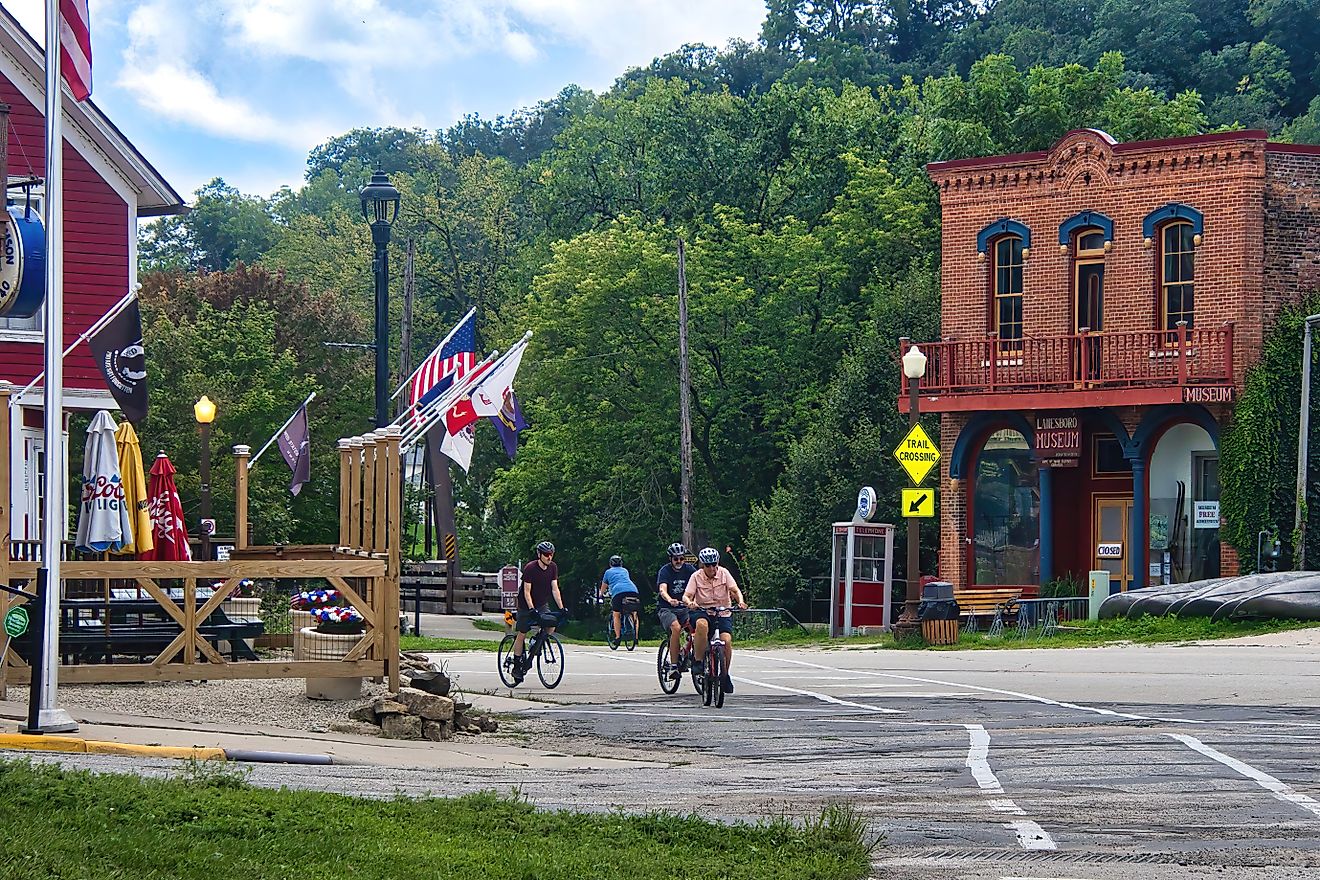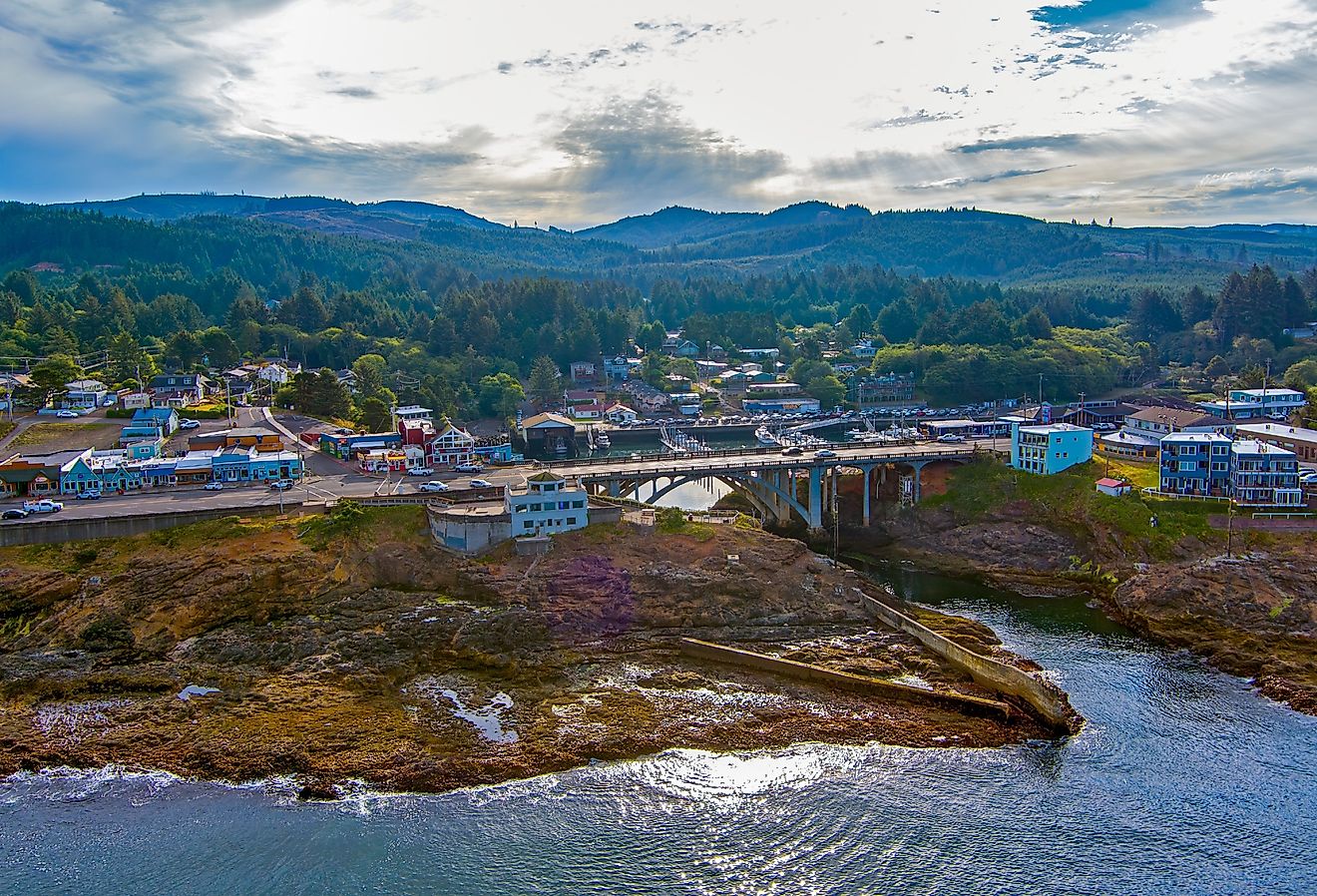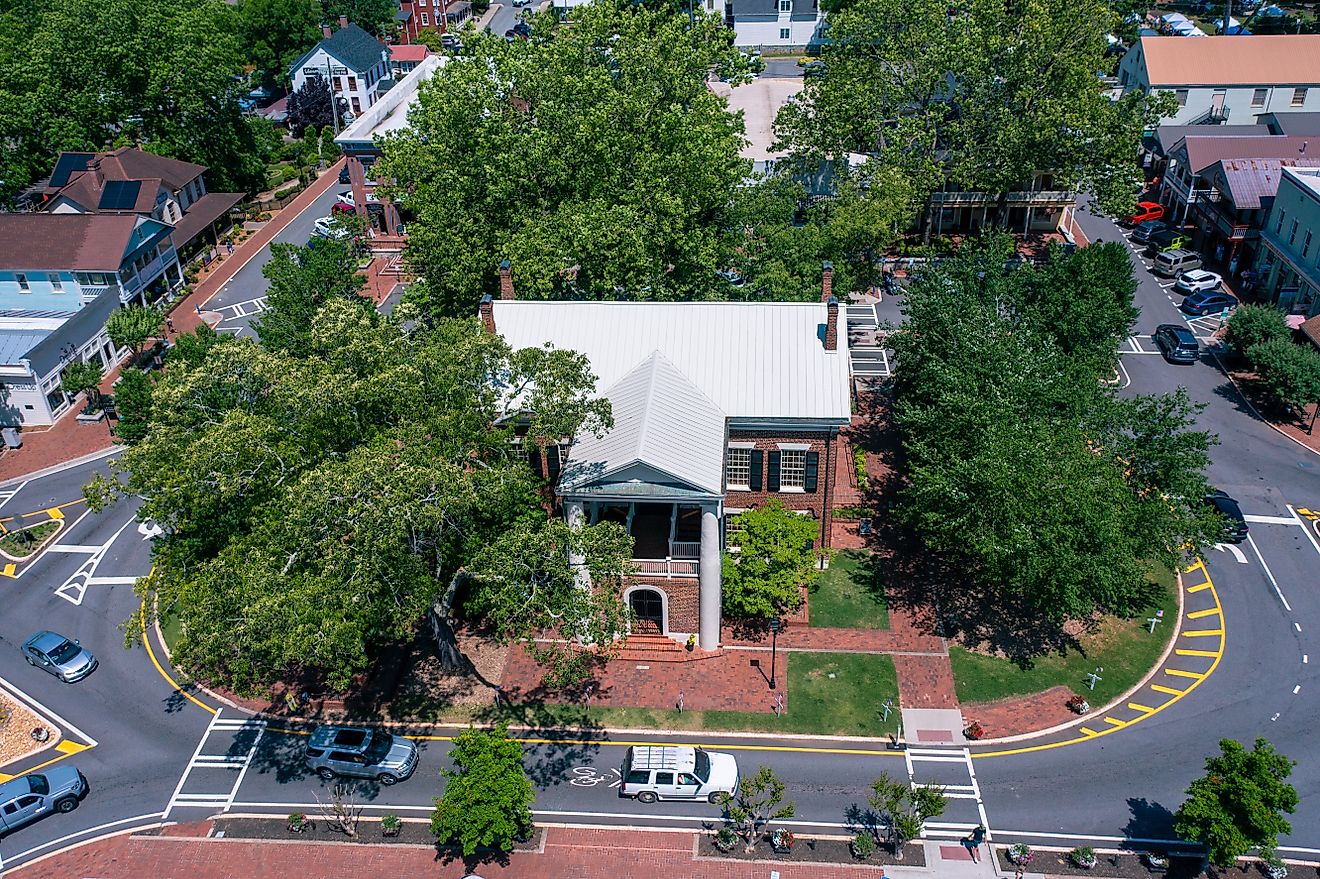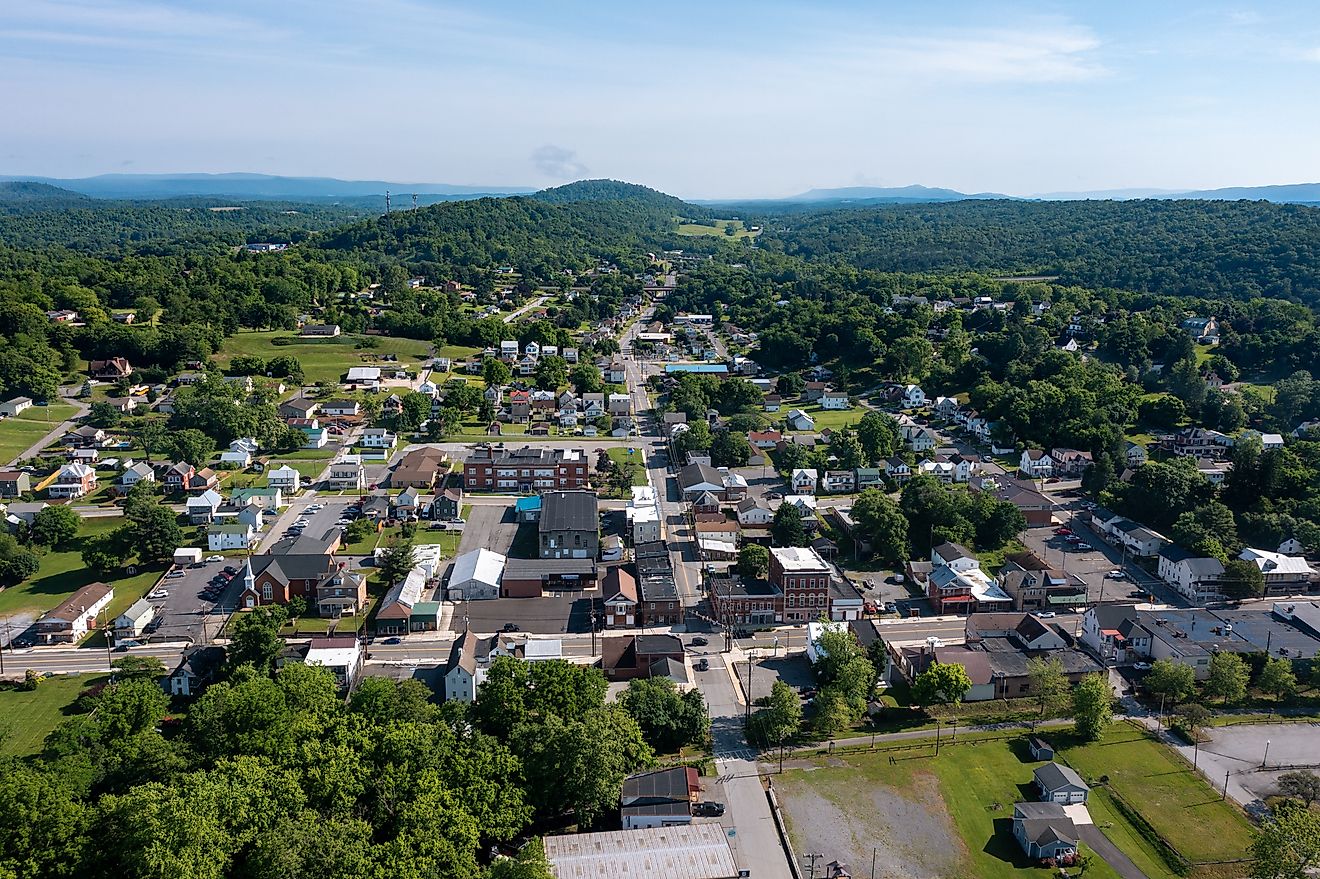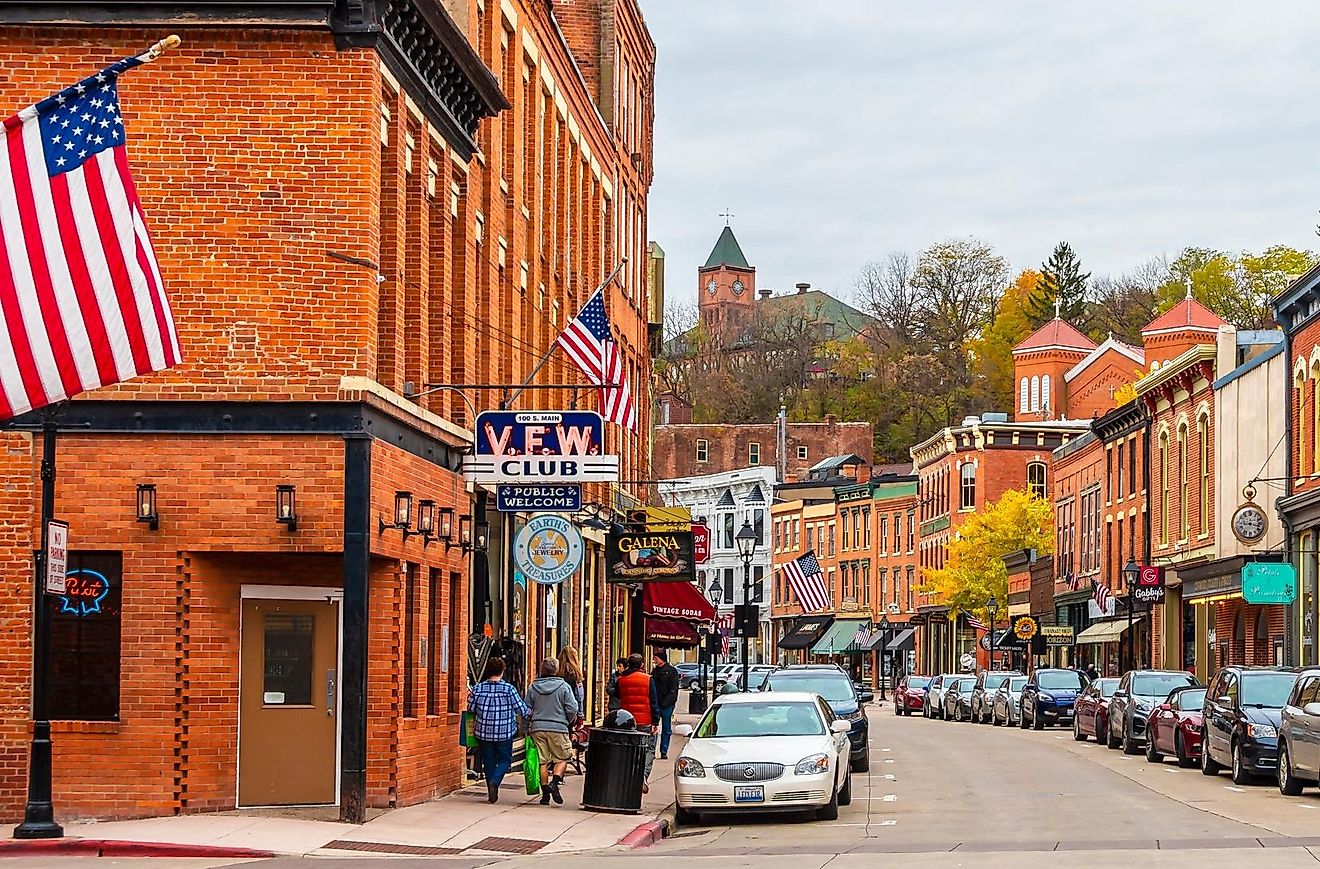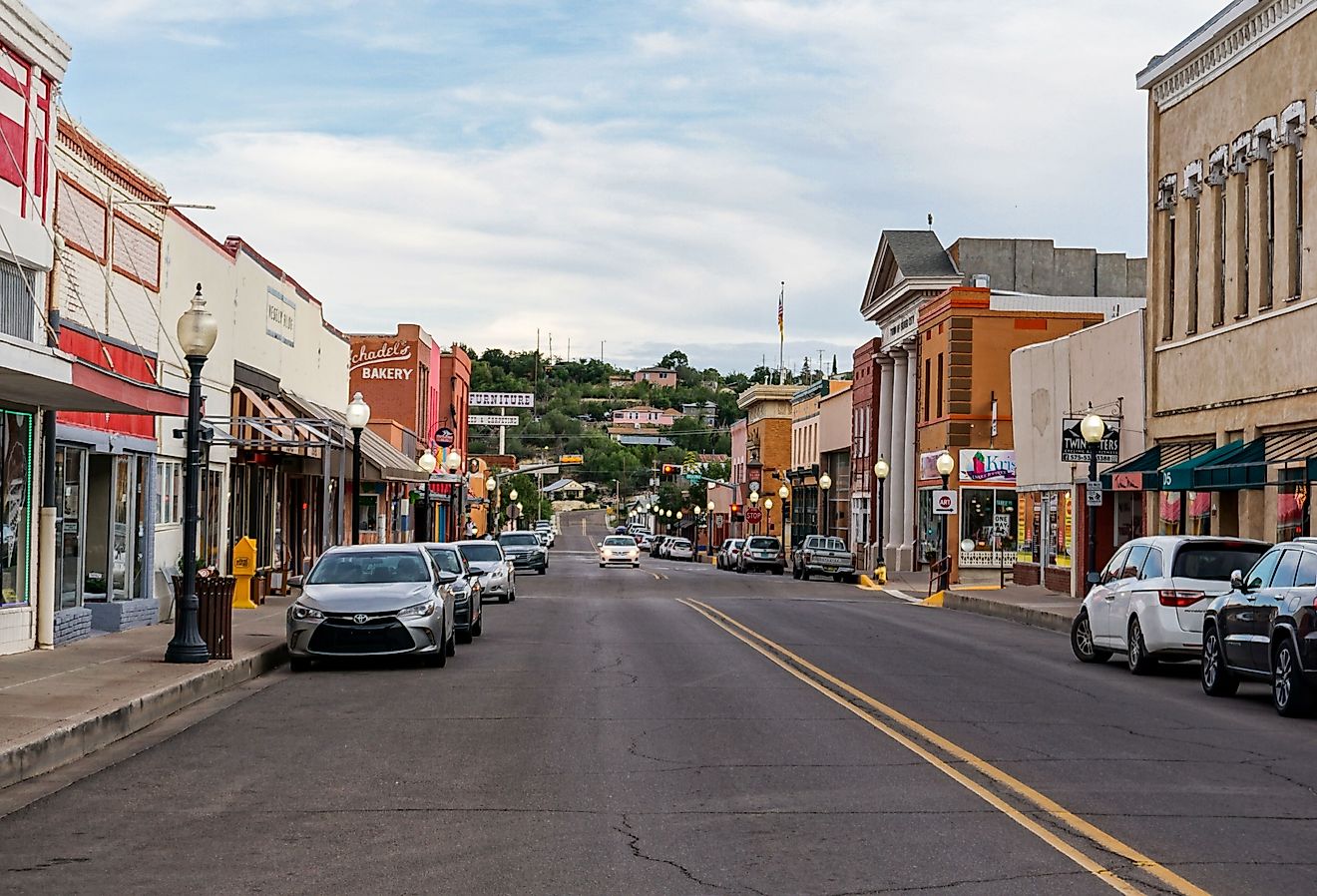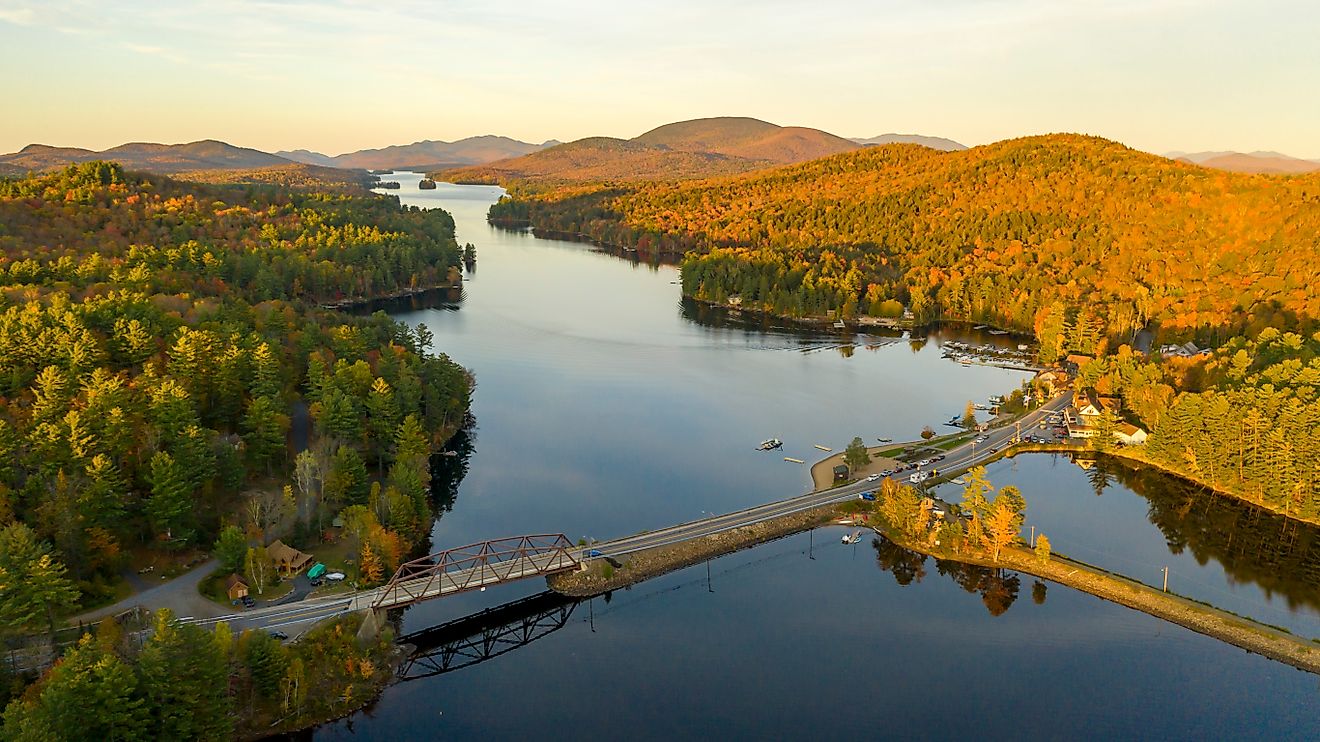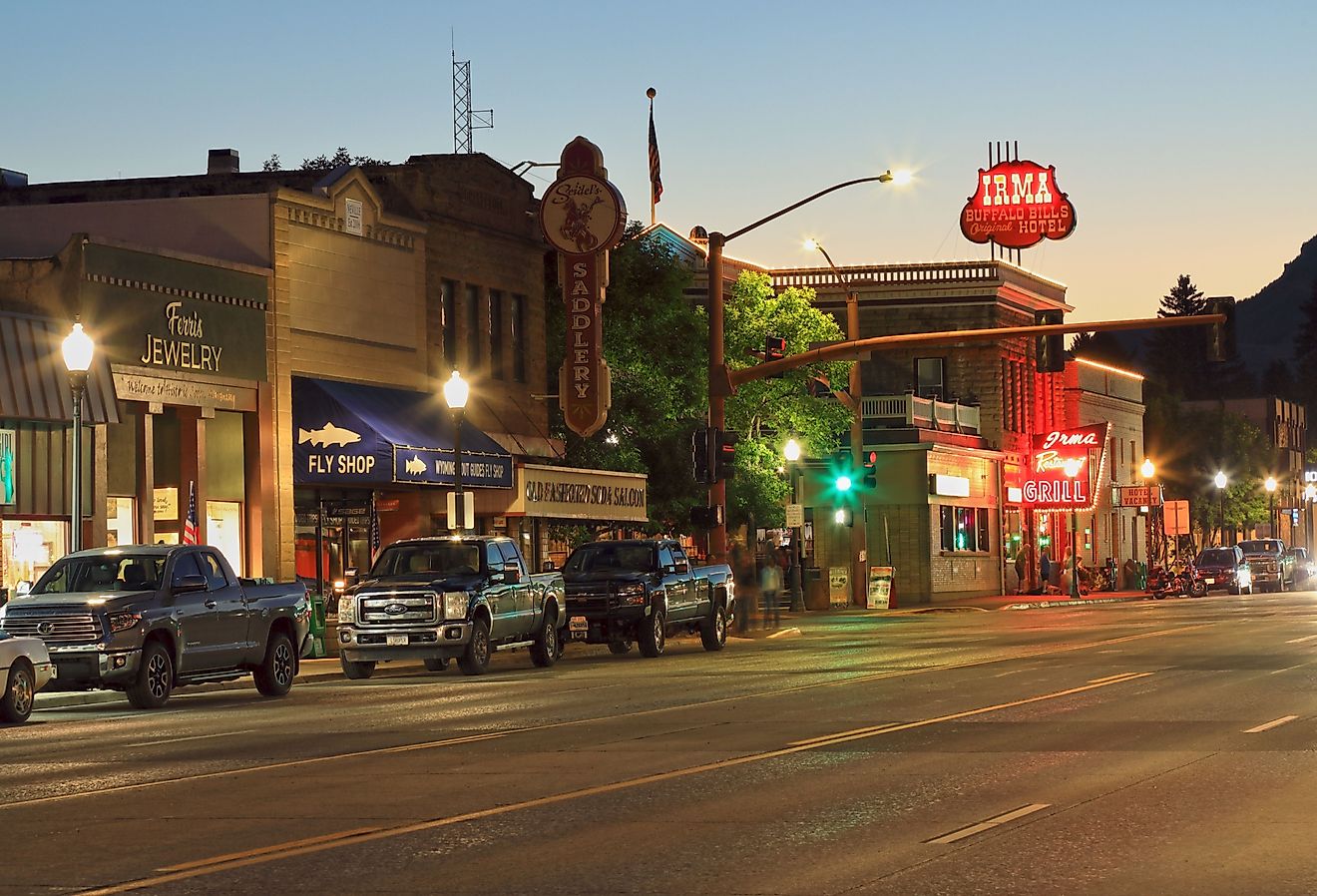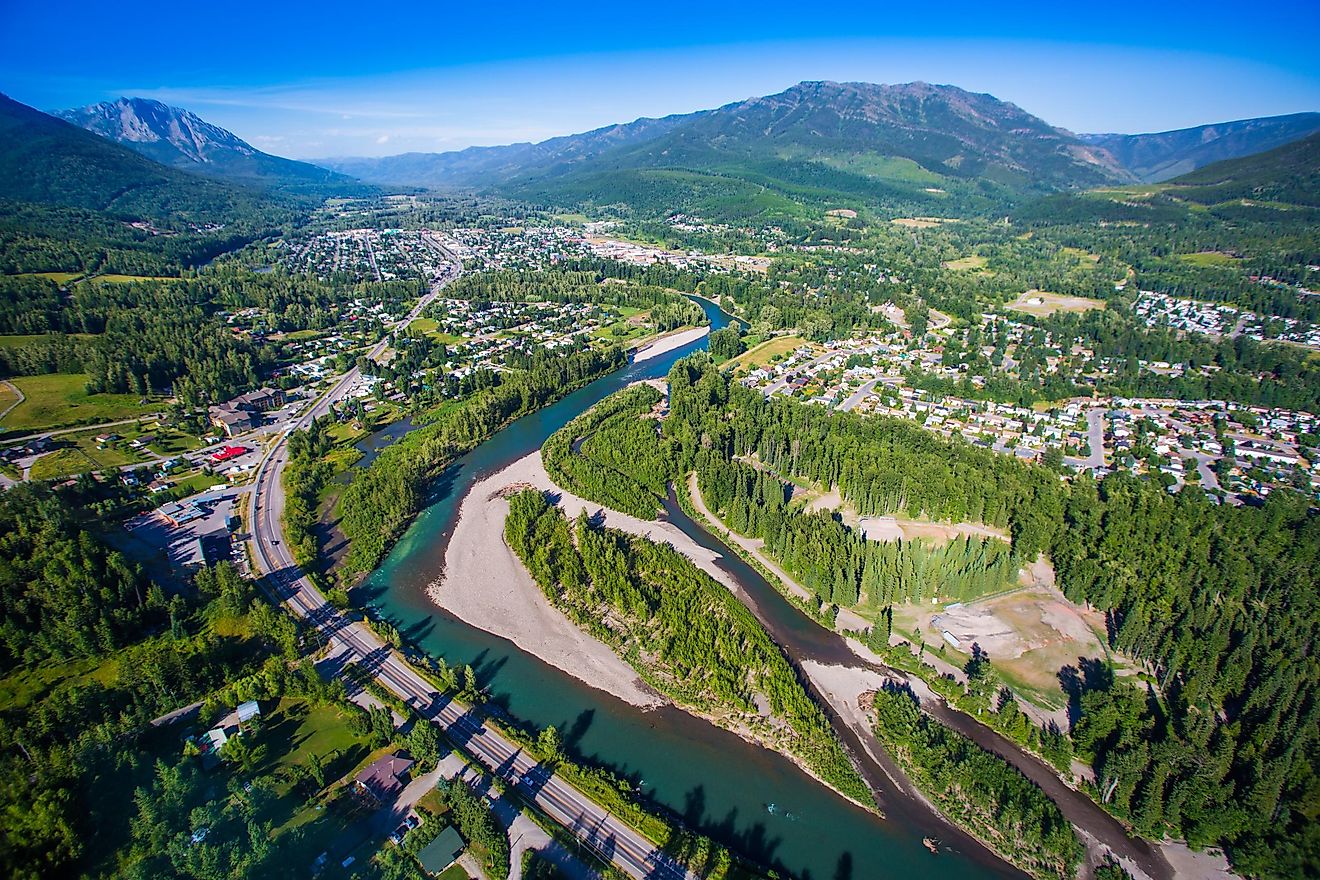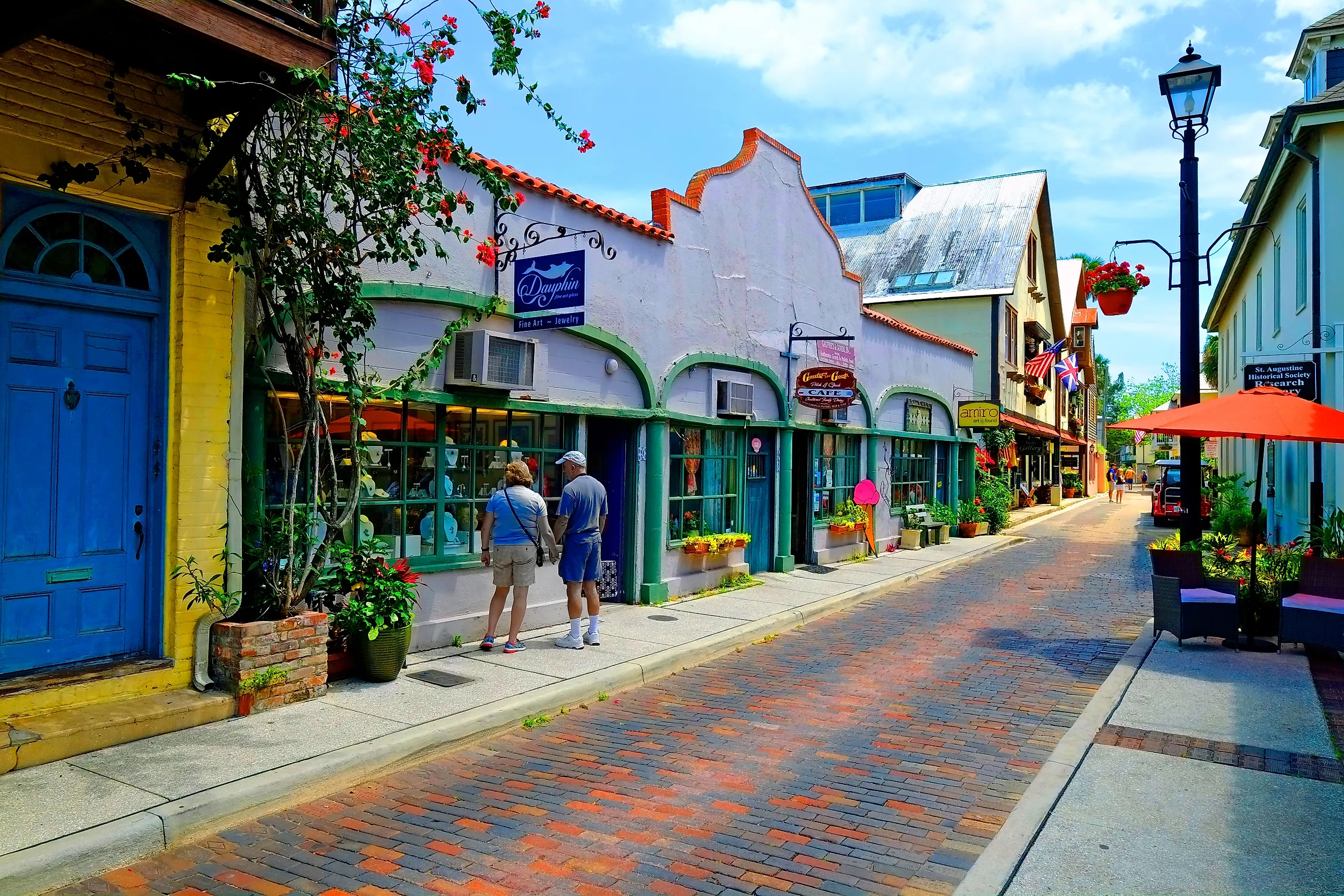
10 Prettiest Downtown Strips In Florida
Forget the beaches for a moment and imagine Florida as ten parallel storylines etched in brick, each no wider than a few city blocks yet deep enough to hold a century of ambition. These downtown strips weren’t sculpted by hotel chains or ride engineers; they were shaped by shrimp fleets, citrus barons, and sponge divers who left behind streets that still pulse with the same entrepreneurial voltage.
This guide stitches those ten ribbons into a single road trip for the feet. The goal isn’t to rank but to reveal: to show how, in Florida, some of the most compelling narratives unfold far from the sand, on narrow corridors where architecture, industry, and local ritual still converge at walking speed.
Fernandina Beach
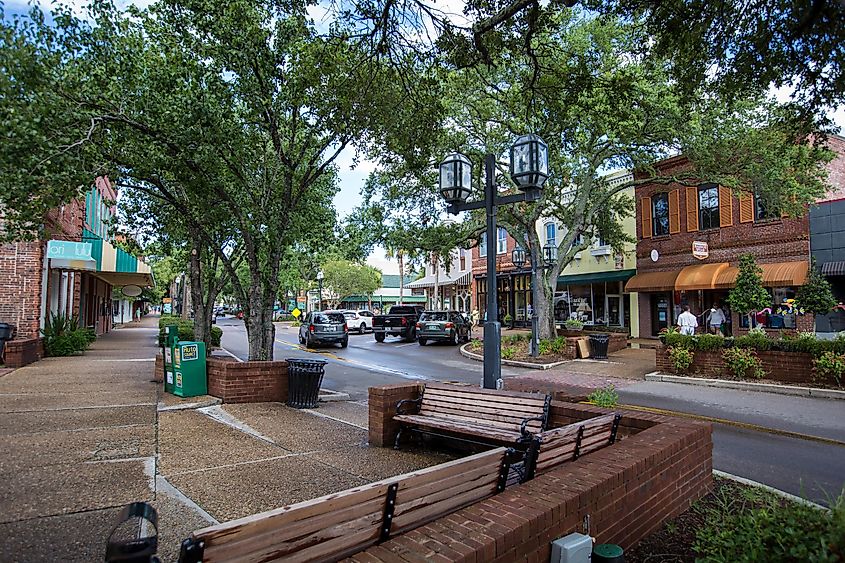
Fernandina Beach is the only U.S. town to have flown eight different national flags, a legacy visible in the architecture of its historic downtown, most notably in the preserved 19th-century buildings along Centre Street. Located on the northern tip of Amelia Island, the town developed around a working port and still maintains active shrimping docks alongside restored Victorian storefronts. The district is listed on the National Register of Historic Places and spans over 50 blocks, making it one of the most intact examples of a late-1800s Southern port town.
Visitors can begin at the Amelia Island Museum of History, housed in the island’s former jail, where exhibits focus on local piracy, the shrimping industry, and the area’s Civil War role. Just down Centre Street, the Palace Saloon, opened in 1903, is Florida’s oldest operating bar and still features its original 40-foot mahogany bar and mosaic floors. For lunch, Timoti’s Seafood Shak serves locally caught shrimp baskets in a courtyard setting one block from the riverfront. The downtown ends at Fernandina Plaza Historic State Park, a quiet bluff overlooking the Amelia River with views of marshes and moored shrimp boats, offering a direct link between the town’s preserved past and its working-waterfront present.
Lake Wales
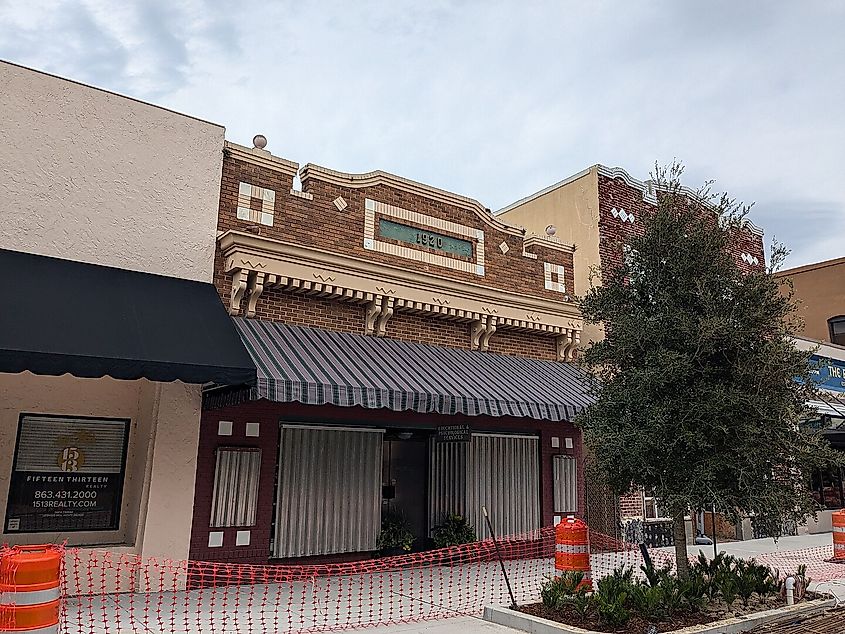
Lake Wales is the only town in Florida where a church, a carillon tower, and a master-planned downtown all originated from the same 1920s vision of civic beauty. Designed by Frederick Law Olmsted Jr., the landscape around the town was shaped in tandem with the Mediterranean Revival buildings downtown, creating a rare integration of architecture and land use. This plan extended from Bok Tower Gardens on Iron Mountain, Florida’s highest point, to the commercial arcades along Stuart Avenue.
The Lake Wales History Museum, located in the town’s 1928 Atlantic Coast Line railroad depot, anchors the downtown’s east end with exhibits on citrus cultivation, rail expansion, and turpentine production. At the center of downtown, the restored 1920s Dixie Walesbilt Hotel remains closed to lodging but opens periodically for architecture tours. The Florida’s Natural Grove House Visitors Center, though slightly outside the historic district, connects directly to downtown through walking trails and citrus heritage exhibits.
Mount Dora
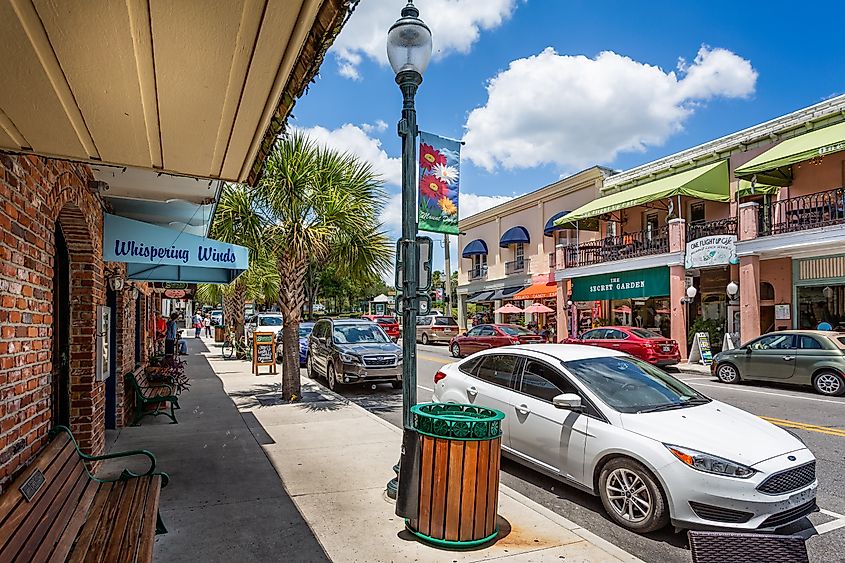
Mount Dora is one of the only towns in Florida built on a lake bluff rather than flatland, with its downtown arranged on a natural incline that descends toward Lake Dora. This elevation change creates tiered street views and direct access to the shoreline, an uncommon feature in Central Florida. The town is also known for maintaining a functioning inland lighthouse, Mount Dora Lighthouse, used for small-craft navigation, a rarity in non-coastal municipalities.
The Modernism Museum, located on E. 4th Avenue, houses one of the largest collections of Studio furniture design in the country, including pieces by Wendell Castle and Wharton Esherick. Donnelly Park, situated at the downtown crossroads, includes a grid of shaded walkways and the town’s original 1923 community building. For dinner, The Goblin Market Restaurant is tucked behind a vine-covered alley off 3rd Avenue and operates within a three-story house filled with book-lined rooms.
Safety Harbor
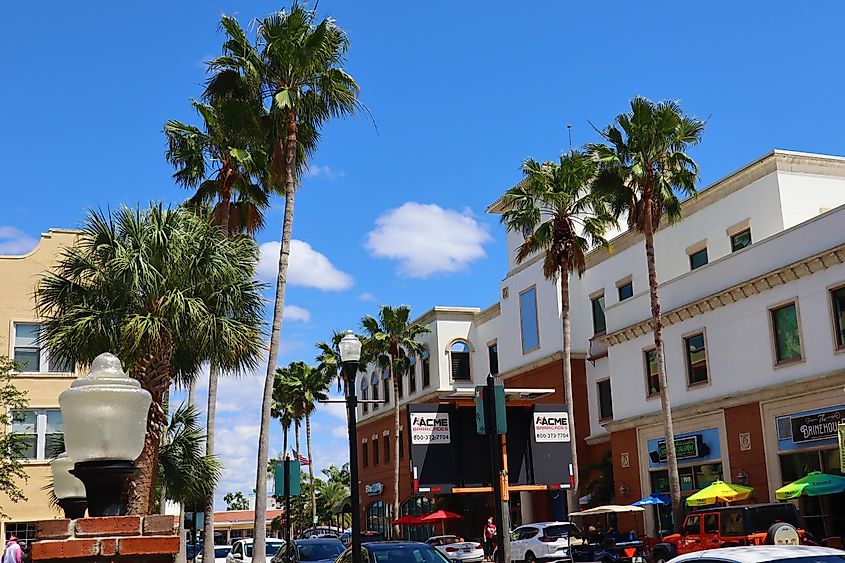
Safety Harbor is built on the site of the Tocobaga tribe’s capital and is home to Espiritu Santo Springs, a natural mineral spring that attracted settlers and developers long before the town was incorporated in 1917. The spring still flows beneath the Safety Harbor Resort and Spa, making this one of the only downtowns in Florida where a working spa is built around a documented Native American sacred site.
Main Street begins at Philippe Park, named for Count Odet Philippe, who introduced grapefruit to Florida. The street extends west toward Tampa Bay, passing Safety Harbor Art and Music Center, a mixed-media venue covered in mirrored mosaics that hosts regular gallery events and community workshops. Bar Fly Saltwater Grill, located next to the marina, serves Gulf shrimp tacos and craft beer with seating that opens directly onto the bay. Across the street, Whimzeyland, also known as the "Bowling Ball House," is a private residence turned public folk art landmark filled with painted objects and sculpture. The walkable downtown ends at the Safety Harbor Pier, where locals fish at sunrise and watch manatees feed on the seawall vegetation. The street plan has not changed since 1925 and continues to support both residential and visitor use.
St. Augustine
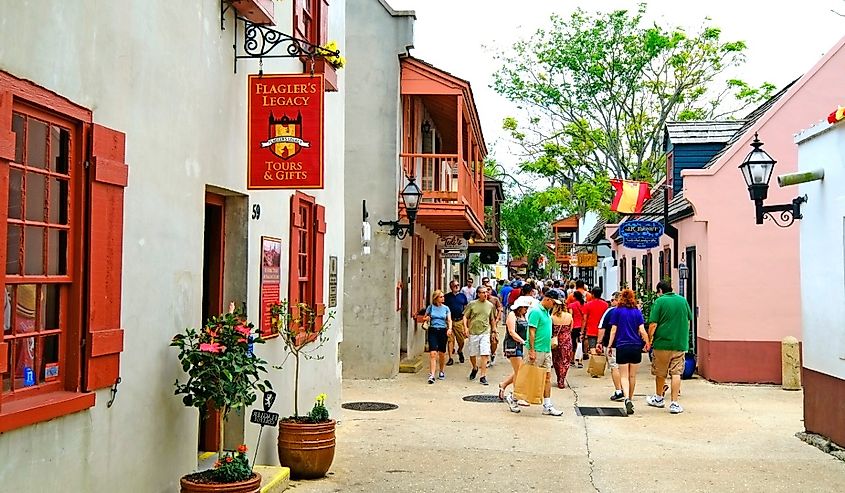
St. Augustine is the oldest continuously inhabited European-established settlement in the continental United States, founded by the Spanish in 1565. Its downtown street grid predates American independence and includes original colonial buildings constructed with coquina, a local shell-based limestone unique to the region. The layout of the downtown, especially along St. George Street, follows the lines of the original Spanish town plan, preserving both its form and material history.
Castillo de San Marcos, located at the edge of the historic district, is the oldest masonry fort in the country and anchors the town’s northeastern boundary. Across the green, the Columbia Restaurant serves Cuban and Spanish dishes in a structure built in 1905, part of a family-run chain that began in Tampa's Ybor City. The Lightner Museum, housed in the former Alcazar Hotel, contains 19th-century decorative arts and sits opposite Flagler College, whose main building was once the Hotel Ponce de León. The St. Augustine Distillery, located in a former ice plant, produces small-batch spirits and offers tours that detail the industrial history of the building.
Stuart
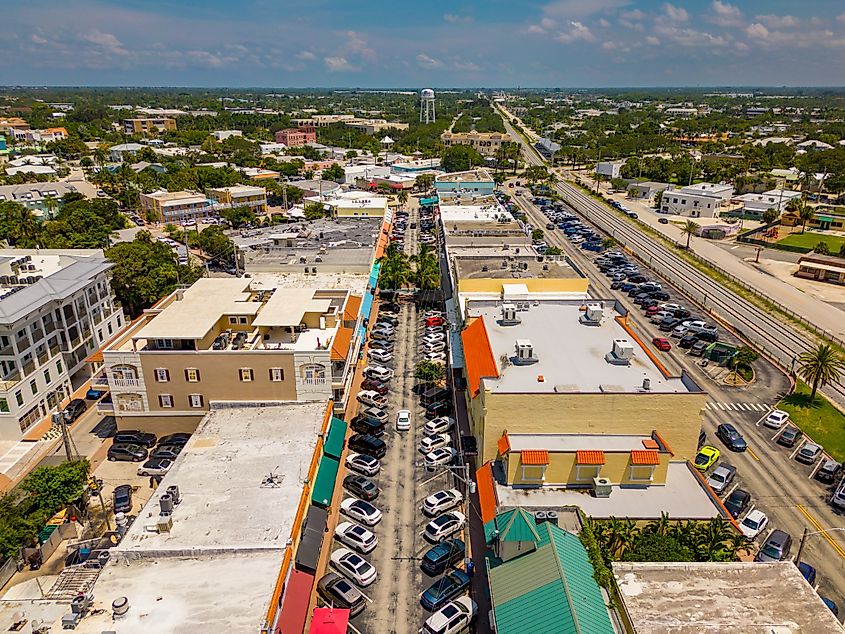
Stuart holds the title of "Sailfish Capital of the World" and is one of the few towns in Florida where a historic downtown directly intersects with an active riverfront. The St. Lucie River wraps around the central business district, and a wooden boardwalk, Riverwalk, extends from the marina through parks and behind businesses, forming a pedestrian corridor that connects civic and commercial spaces without relying on street traffic.
The Stuart Heritage Museum, housed in the 1901 Stuart Feed Store, preserves photographs, local business artifacts, and newspaper archives inside a single-room wooden building that predates the city’s incorporation. Across the street, The Gafford serves short rib meatloaf and dry-aged steaks inside a restored Main Street storefront, originally built as a hardware store in the 1920s. Terra Fermata, an open-air music venue located on SE 6th Street, operates as both a bar and performance space under a canopy of tropical trees. At the waterfront edge, Shepard Park offers direct kayak access and benches overlooking the Roosevelt Bridge. These sites remain within a six-block radius, with most buildings retaining their original wood or brick facades.
Tarpon Springs
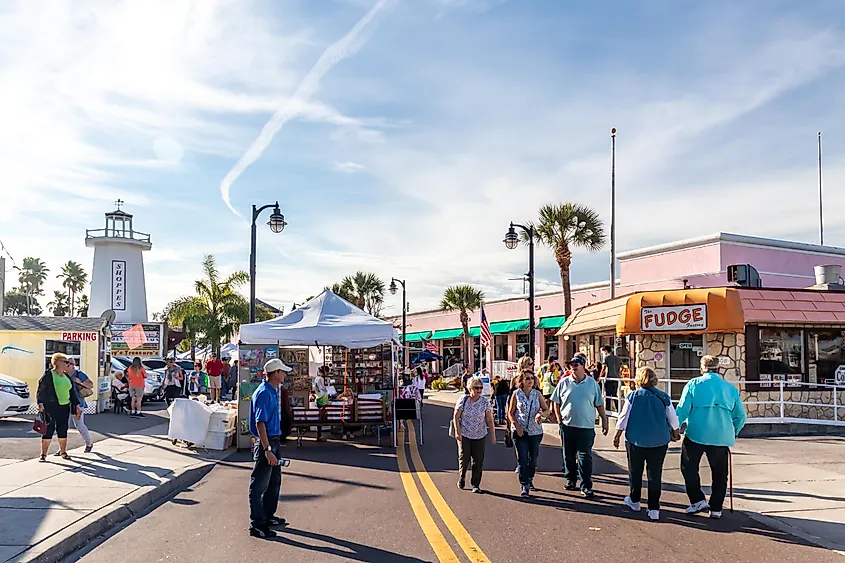
Tarpon Springs has the highest percentage of Greek Americans of any U.S. city and is the only place in Florida where sponge diving, imported from the Dodecanese islands, remains an active industry. The downtown grew alongside the sponge docks on the Anclote River and still supports businesses tied directly to that trade. Streets are lined with Orthodox churches, Greek bakeries, and businesses that opened during the sponge boom of the early 1900s.
The Tarpon Springs Heritage Museum, located in Craig Park, documents the town’s Greek immigration history and displays diving suits, sponge baskets, and early settlement photographs. Hellas Restaurant and Bakery on Dodecanese Boulevard serves pastitsio and spanakopita beside a full-service pastry counter stocked with koulourakia and baklava. St. Nicholas Greek Orthodox Cathedral, modeled after the Hagia Sophia, is open to visitors and hosts Epiphany Day ceremonies with cross-diving in Spring Bayou. At the river’s edge, the Sponge Exchange, formerly a central marketplace for sponge merchants, now houses retail shops but preserves its original stone structure and layout.
Apalachicola
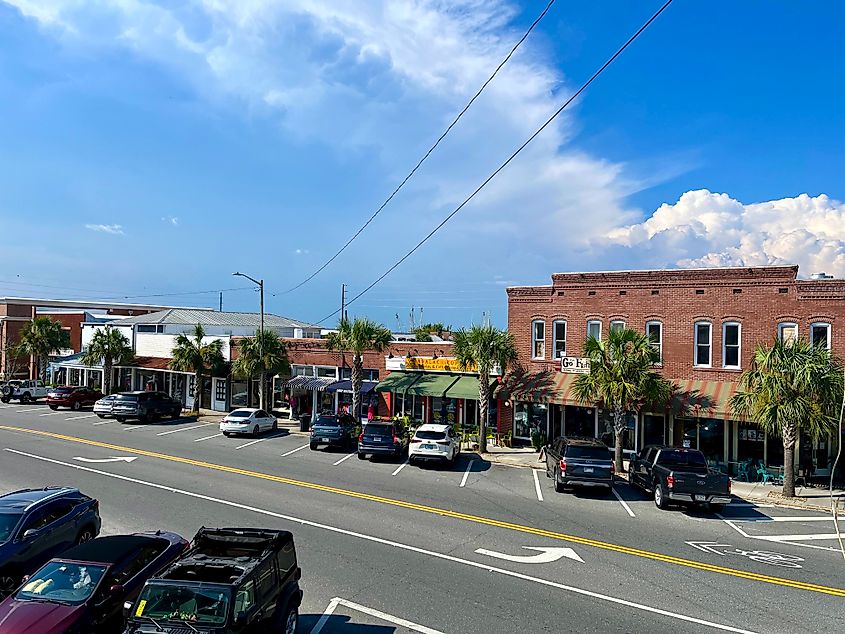
Apalachicola was once the third busiest port on the Gulf of Mexico and remains one of the few Florida towns where the original 19th-century street grid, brick warehouses, and cotton exchange buildings are intact and still in use. The downtown district runs parallel to the Apalachicola River and retains the same economic orientation it had during the antebellum era, with seafood replacing cotton as the central export. The town’s name is Muscogee in origin and refers to "people on the other side."
The Apalachicola Maritime Museum, located on Water Street, offers exhibits on river trade, oyster harvesting, and boatbuilding, and also operates tours aboard a restored wooden Gulf schooner. Nearby, Owl Café serves shrimp and grits and oyster po’ boys in a restored turn-of-the-century commercial building with original pine floors. Across the street, Oyster City Brewing Company produces small-batch beer on-site and occupies a space that formerly housed a chandlery. Lafayette Park, located at the eastern end of downtown, features a central gazebo and live oaks, and opens directly onto the bay.
Venice
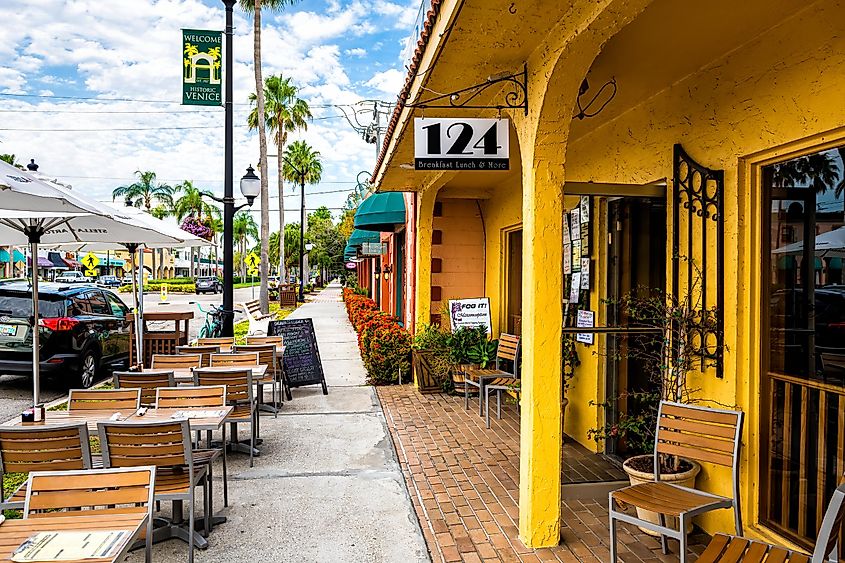
Venice is one of only a handful of U.S. cities entirely planned and constructed under the direction of a single architect. In 1926, urban planner John Nolen designed the city with Mediterranean Revival architecture, palm-lined boulevards, and an integrated park system. Venice Avenue, the downtown spine, was engineered to channel Gulf breezes inland and remains the central axis of the original street plan. Nearly all buildings in the historic core conform to Nolen’s unified aesthetic guidelines.
The Venice Museum & Archives, located in the Triangle Inn, a 1927 boarding house, preserves documents and photographs detailing the town’s development by the Brotherhood of Locomotive Engineers, who funded its construction. A block west, Centennial Park hosts a weekly farmer’s market and includes an interactive fountain and clock tower designed to mirror 1920s architectural motifs. Café Venice on West Venice Avenue serves pasta and seafood in a structure that was once a dry goods store. At the far end of downtown, the Venice Theatre operates out of the city’s original 1926 civic auditorium and offers year-round performances from both touring and local companies.
DeFuniak Springs
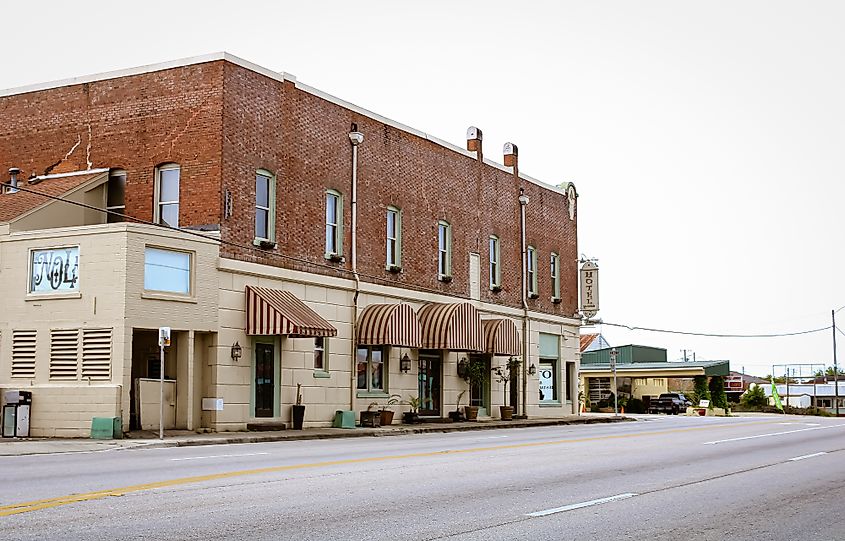
DeFuniak Springs was founded as a winter campus for the Chautauqua Assembly and is one of only two places in the world with a naturally circular spring-fed lake, Lake DeFuniak, at its center. The original 19th-century Chautauqua buildings and Victorian-era homes form a loop around the lake on Circle Drive, creating an intact educational and civic campus still in use. The downtown was designed to complement this arrangement, with brick-paved streets and period architecture linked to the lakefront.
The Walton-DeFuniak Library, built in 1887, holds the title of Florida’s oldest continuously operating library and includes a collection of rare 19th-century books and artifacts. The Chautauqua Hall of Brotherhood, partially restored after hurricane damage, remains a venue for historical exhibits and performances. The Florida Chautauqua Theatre, also located downtown, presents seasonal plays and community events in the original 1920s motion picture house. These structures lie within a five-block radius of the lake and are maintained under the oversight of the DeFuniak Springs Historic District, which enforces architectural preservation guidelines and prohibits incompatible exterior alterations.
Together, these ten downtowns prove Florida’s identity isn’t confined to beaches or high-rises but embedded in working docks, citrus arcades, and Chautauqua circles. Each street grid, preserved by deliberate codes and community will, invites exploration at walking pace. Follow them and you’ll chart the state’s commercial evolution, from sponge markets to studio furniture, through architecture still earning its keep. The stories remain open, waiting for curious readers and footsteps rather than headlines.
